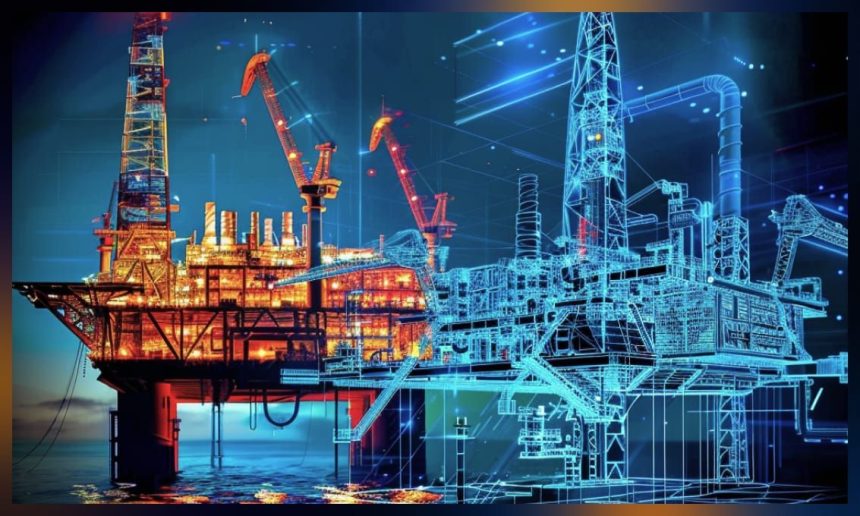Introduction
For a very long time now, the oil and gas industry has been neck-deep in leveraging traditional geological and engineering approaches for effective reservoir management and production optimization. While this has been fairly productive over the years, it has also presented its unique limitations, especially with the constant complexities of reservoirs. This concern, therefore, demands a long-term and cost-effective solution, which Artificial Intelligence has shown itself to be the rescue. AI is now the transformative tool for reservoirs, helping companies analyze, predict, and optimize strategies involving datasets and reservoir behavior, ultimately improving efficiency and sustainability. This article, therefore, sets the stage to examine the role of AI in advancing the characterization of reservoirs, its drilling and production processes using real-world case studies and relevant data in order for the technology’s gaps to be addressed, in return increasing the chances for improved production efficiency.
AI in Reservoir Characterization
Reservoir characterization is a process in petroleum engineering that involves the study of underground reservoirs, understanding their properties, such as rock or fluid, to determine the possible flow of oil and gas with it. This study is what pre-informs engineers on how to drill and the expectations from the reservoir’s resources.
To encourage effective resource management, AI reservoir characterization is advised, as it digitally helps to interpret seismic well-log data processes. This contradicts the manual procedure prior to the intervention of AI. Fortunately, AI has introduced machine learning algorithms into the system to easily detect patterns and predict subsurface properties. This is evident in Schlumberger’s study, where it’s found that AI-based reservoir modeling systems have improved accuracy by 25% as compared to conventional methods. It’s permeable and reduces uncertainties, as it proactively highlights areas for improvement, such as identifying sweet spots for drilling, leading to higher extraction efficiency and lower costs.
Optimizing Drilling Operations with AI
As the most essential and demanding aspect of oil production, drilling reservoirs are very expensive. However, if this process is optimized, it can lead to reduced operational costs and can further enhance safety. With AI-driven predictive models, the drilling process can be optimized, from analyzing data of drilling equipment to adjusting variables like weight on bit, torque, and mud flow. An example in this regard is ExxonMobil’s collaboration with AI firms that has facilitated autonomous drilling systems for the company. Apparently, this integration has reduced drilling time in deepwater operations by 20%, which has greatly saved costs. This is also the same reality for the Permian Basin in Texas, where AI-driven drilling optimizations have led to a sufficient output increase of over 1.5 million barrels per day in the last five years.
AI-Driven Predictive Maintenance and Equipment Reliability
Unexpected equipment failures within the field of oil and gas can cause a very large financial loss. AI-based predictive maintenance systems rely on the sensor data of pumps, compressors, and pipelines to predict the potential failure of equipment before it actually happens. A perfect example is that of Royal Dutch Shell, which set in place an AI-based predictive maintenance system for all its offshore platforms. This system saved maintenance costs by 30% and allowed for 25% more uptime of equipment, showing AI’s beneficial impacts on asset reliability. Additionally, BP’s machine learning models for compressor monitoring saved approximately $200 million per year by avoiding catastrophic failures.
Enhancing Production Forecasting with AI
Accurate production forecasting is essential for optimal resource utilization and meeting market demands. Traditional forecasting methods fail to adapt to varying reservoir conditions, but AI is capable of doing so by integrating historical information with real-time operational measurements.
For instance, Chevron’s use of AI to predict production has enhanced forecasting by 10%, enabling better decision-making regarding scheduling and investment. AI algorithms can detect anomalies in production trends and recommend adjustments to optimize overall output.
Environmental Monitoring and Sustainability
As regulatory scrutiny intensifies, the oil and gas sector faces mounting pressure to reduce its environmental footprint. AI is pivotal in environmental monitoring, enabling the real-time detection of oil spills, gas leaks, and emissions. BP’s methane detection AI, which leverages satellite imagery and machine learning to track emissions from its operations, is a prime example in this regard. This innovative technology has led to a 20% reduction in BP’s methane intensity, aiding its ambition to achieve net-zero emissions by 2050. Additionally, AI enhances carbon capture and storage (CCS) efforts by improving site selection and monitoring the efficiency of CO₂ injection.
Also, the decommissioning of aging oil fields is a costly and intricate endeavor. In the North Sea, projected decommissioning expenses were set to surpass £40 billion, prompting energy companies to seek AI-driven solutions.
Rahd AI, in partnership with leading oil firms, has created an AI model that streamlines decommissioning strategies, cutting costs by as much as 35%. This advancement is anticipated to save the UK Treasury over £8 billion by 2027, showcasing AI’s potential to transform cost management in aging oil fields.
Challenges
In what would seem like an abstract but expected part of adopting AI in reservoir management, some of its challenges are:
- Quality of Data and Integration: AI models require a large volume of high-quality data, the lack of which is often attributable to incongruences in legacy systems.
- Complex Subsurface Environments: These uncertainties will need continuous retraining for the AI model.
- Workforce Readiness: Engineers and geologists should be trained on how best to make use of AI-derived insights.
- Huge Initial Investment: AI solution deployments require vast upfront capitalization for construction and software development
Conclusion
Artificial Intelligence has led to automated adaptation and effective management of reserves. Exploring aspects of reservoir characterization, increased drilling efficiency, pre-detection of failure, and environmental sustainability just proves that Artificial Intelligence will continue to impact reservoir management and production optimization. Real examples from companies such as Shell, Chevron, and BP show that AI has already brought concrete advances in cost reductions and efficiency improvements.
Undoubtedly, there will be many challenges that limit most of AI adoption and operations, but not a case to hang in the balance; the shift to AI operations is already inevitable for the industry. Holding on to the emerging innovative technologies promises to make surviving in the coming decades—the transformation of the energy landscape—an easier process.
Mr. Oluwasegun Onasanya is a seasoned oil and gas professional with extensive experience in Nigeria’s upstream sector. Currently serving with one of the leading multinational oil corporations (Chevron), he has built a reputation not just for operational excellence but also for his insightful commentary on industry trends. Recognized as a thought leader in the energy space, Mr. Onasanya is passionate about driving innovation and efficiency in the sector.
ALSO READ TOP STORIES FROM NIGERIAN TRIBUNE
WATCH TOP VIDEOS FROM NIGERIAN TRIBUNE TV
- Let’s Talk About SELF-AWARENESS
- Is Your Confidence Mistaken for Pride? Let’s talk about it
- Is Etiquette About Perfection…Or Just Not Being Rude?
- Top Psychologist Reveal 3 Signs You’re Struggling With Imposter Syndrome
- Do You Pick Up Work-Related Calls at Midnight or Never? Let’s Talk About Boundaries






